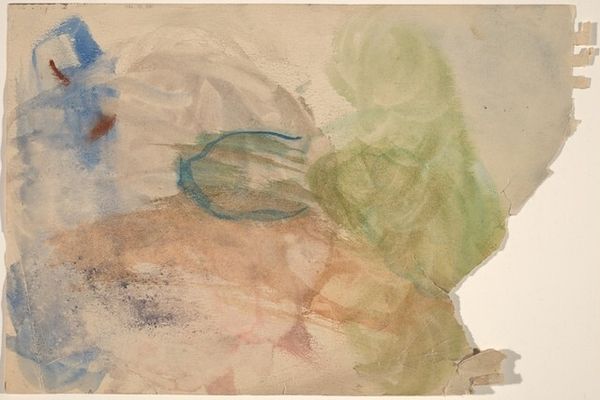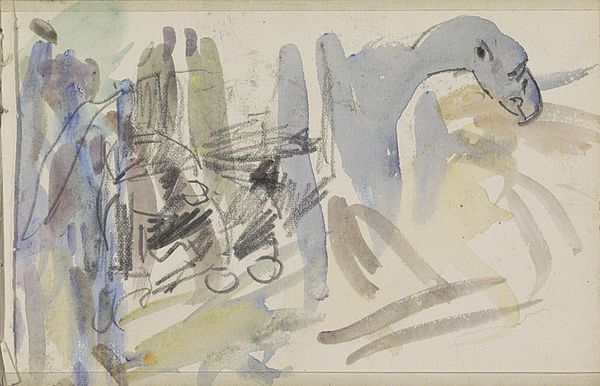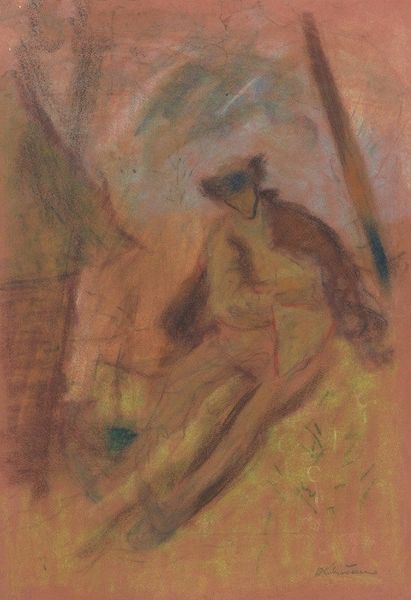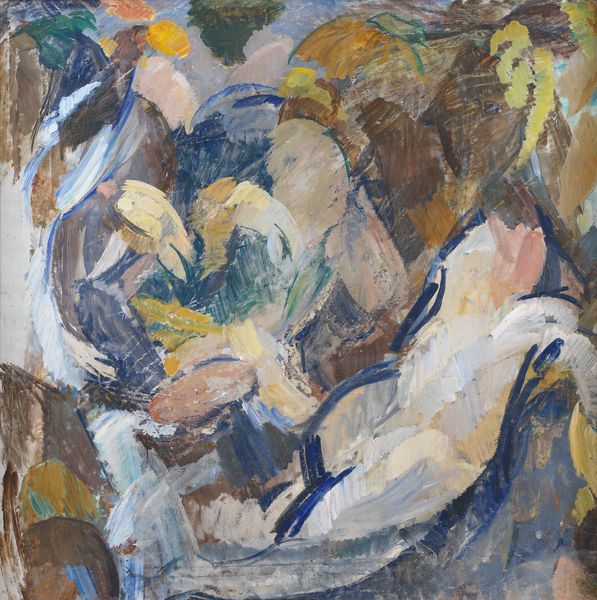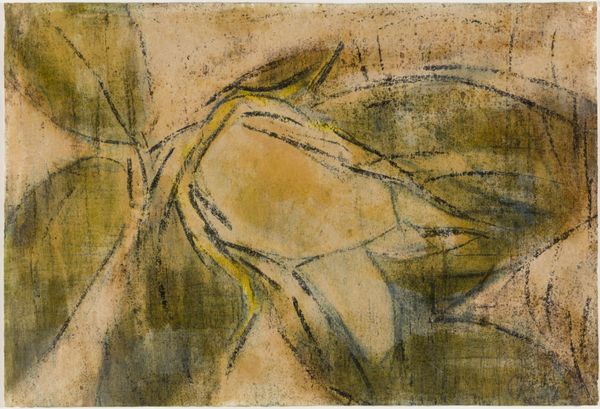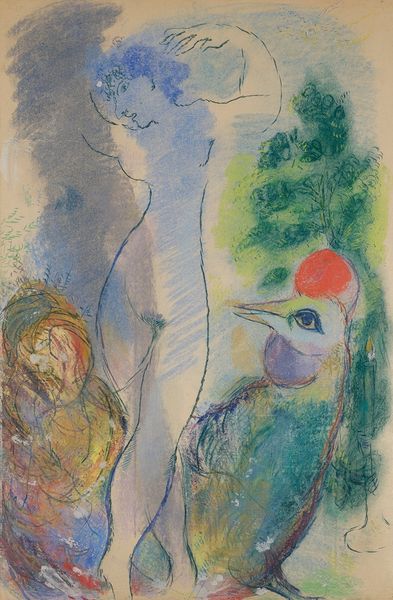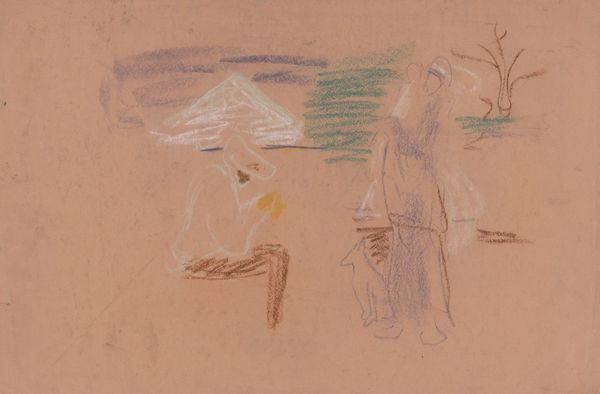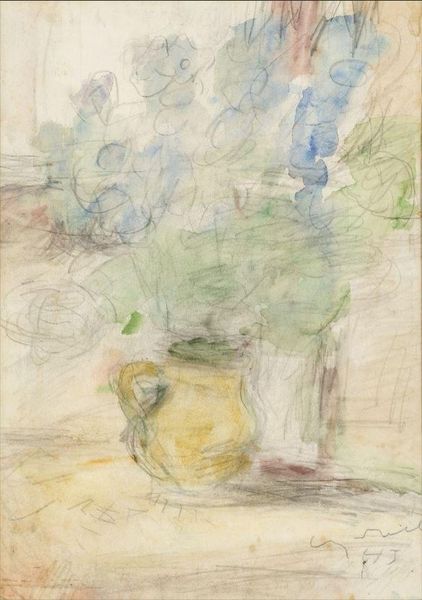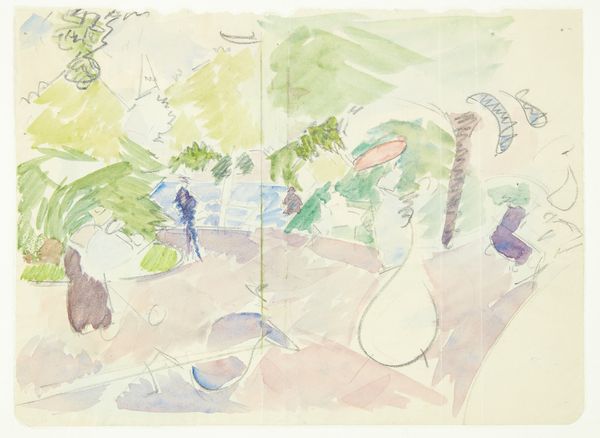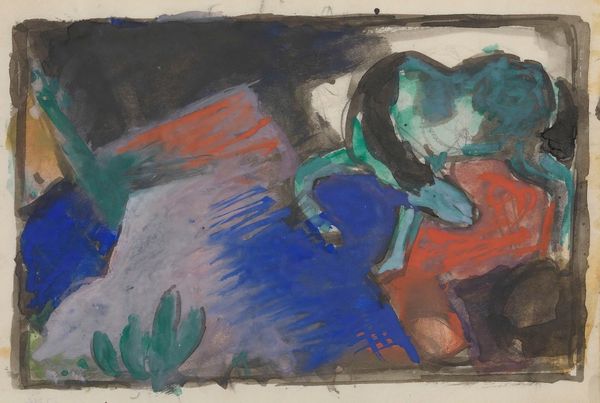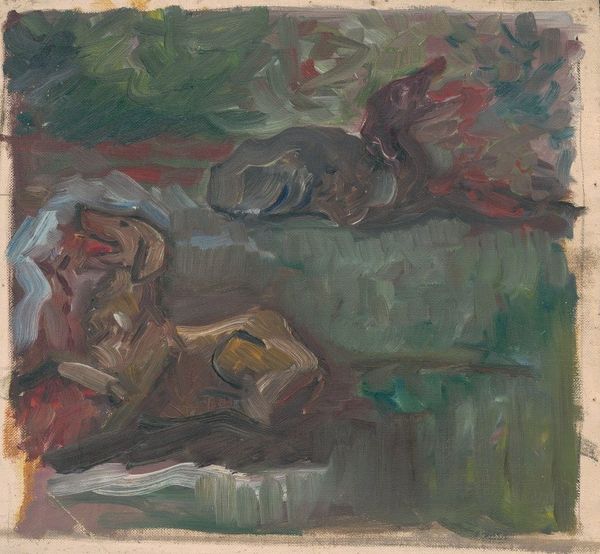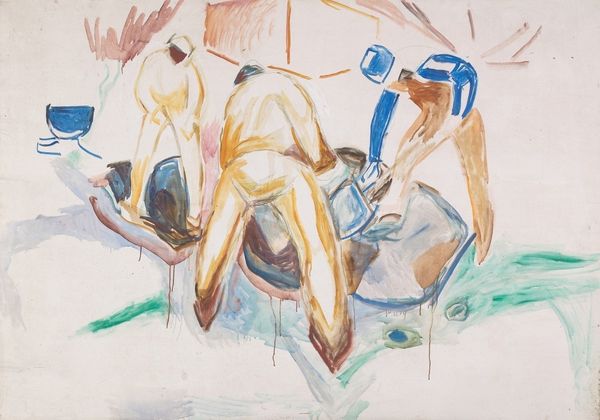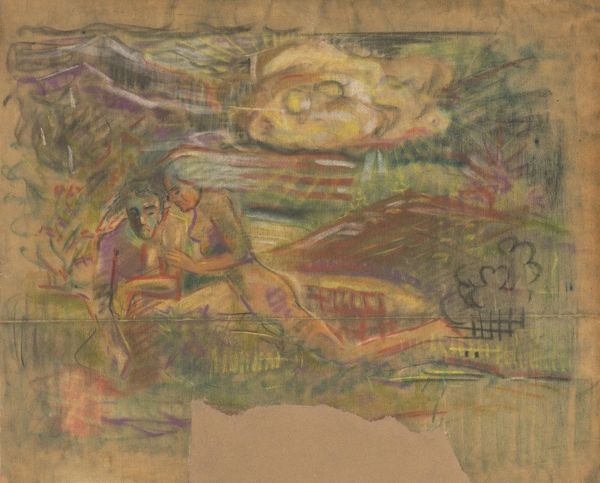
Copyright: Public Domain: Artvee
Curator: Rik Wouters’ colored-pencil drawing, “Woman Putting on Shoes,” created around 1914, offers an intimate glimpse into a private moment. What’s your first impression? Editor: The hazy blue and green palette lends a certain vulnerability. It’s quite raw in its execution; I can almost feel the grit of the coloured pencil on paper. Curator: Wouters, known for his impressionistic style, often depicted his wife, Nel, in domestic scenes. There is something distinctly 'intimist' here – delving into the psychological space of women within the constraints of their homes and lives during this era. Editor: I’m particularly struck by how the quick strokes both reveal and obscure the figure. Notice the unfinished quality? The process seems foregrounded; it’s as though we are observing Wouters at work, grappling with the representation. What materials did he have readily at hand, and what did that availability say about the period, especially during the lead up to and beginning of the first World War? Curator: That’s astute. The lack of detail could also signify the limitations placed upon women—their representation in art being dependent on and dictated by the male gaze, a partial view by design or access. She’s in the act of dressing—returning from the imagined freedom of undress to a daily uniform. Editor: I think the very act of creation with easily attainable coloured pencils suggests that art making in everyday settings becomes a possibility. It collapses any pretense surrounding ‘high art’ and artistic practices generally; consider who would have had access to oil paints during wartime. This makes the subject's pose feel incredibly natural; even now I consider the labor involved in creating the work as equal in artistic value. Curator: Perhaps Wouters was using his artistic privilege to celebrate the simple beauty of daily labor. The work, created on the eve of major upheaval, may very well reflect an idealization of that simplicity. It might hint at how we should approach modern domesticity from a place of grace. Editor: It’s fascinating how this colored-pencil drawing—its making and its subject—presents a collision of contexts: artistic labor and womanhood at the brink of war. It seems that in times of political and material change, the artist’s intimate observation, and very available materials, provides the clearest means of social commentary.
Comments
No comments
Be the first to comment and join the conversation on the ultimate creative platform.
